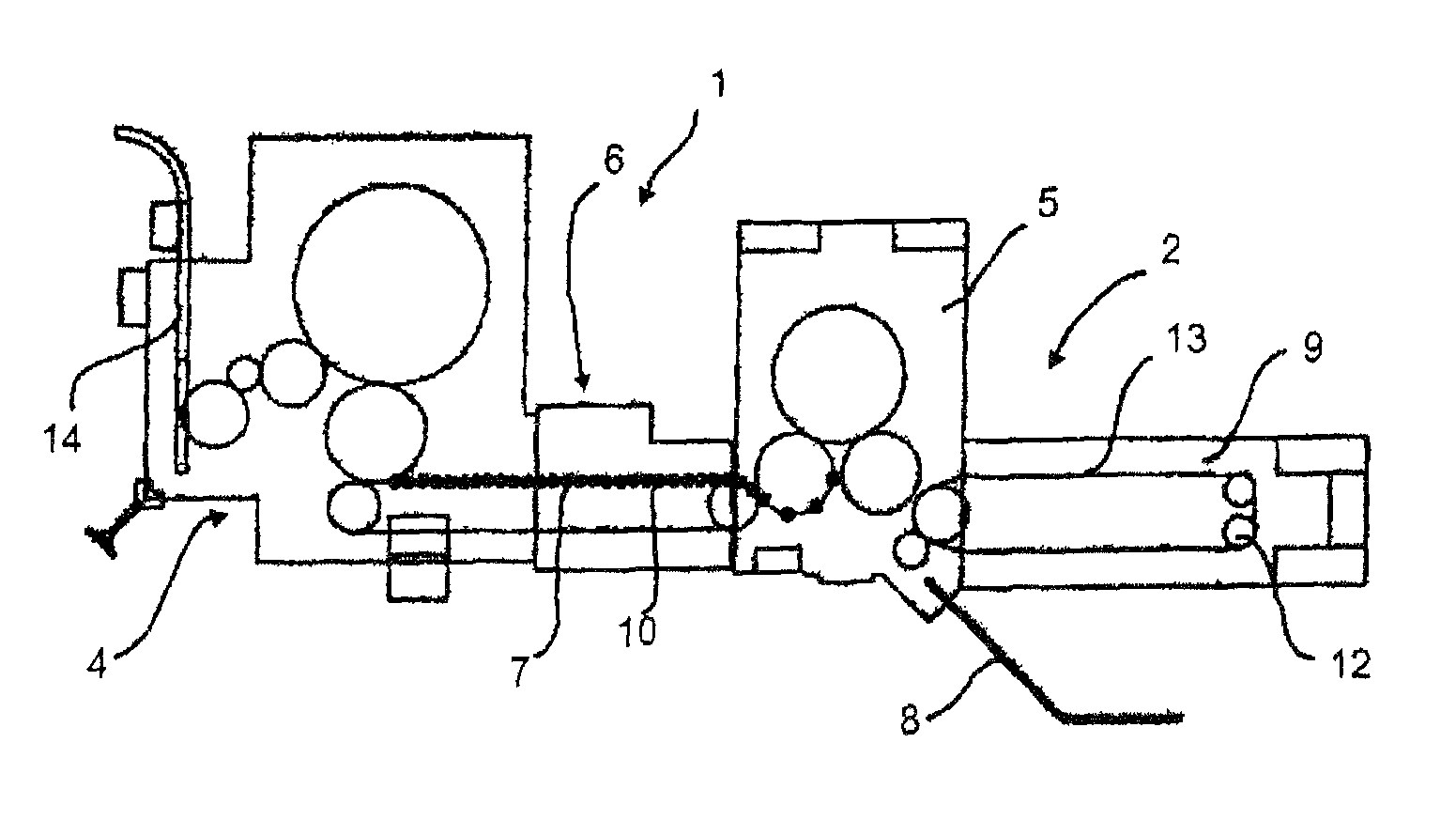Bottle processing system
a processing system and bottle technology, applied in the direction of conveyor parts, packaging, liquid handling, etc., can solve the problems of bottle filling machine, bottle filling, bottle bursting, and the whole system to be stopped
- Summary
- Abstract
- Description
- Claims
- Application Information
AI Technical Summary
Benefits of technology
Problems solved by technology
Method used
Image
Examples
Embodiment Construction
[0037]FIG. 1 shows a system 1 according to the invention in a first operating condition, in which the entire system 1 is operated at a high speed or the regular working speed. What is shown here is the situation in which a plurality of containers 10 have just been arranged in the first processing unit 2, which is a blowing machine, or pass through it. Here, the containers are initially transported by means of a conveying device 13 through an oven 9 and heated therein. The reference numeral 12 relates to a guide roller for the conveyor belt or the conveyor chain 13. The containers 10 are supplied to the system 1 via a supply device 8.
[0038]After an exactly defined heating period, in which the parameters, such as the working speed, for this heating process are precisely established, the containers 10 are blown in the actual blowing device 5, which is also a component of the first processing unit 2, and are brought to their design size. The reference numeral 11 herein relates to the bl...
PUM
| Property | Measurement | Unit |
|---|---|---|
| Time | aaaaa | aaaaa |
| Speed | aaaaa | aaaaa |
| Area | aaaaa | aaaaa |
Abstract
Description
Claims
Application Information
 Login to View More
Login to View More - R&D
- Intellectual Property
- Life Sciences
- Materials
- Tech Scout
- Unparalleled Data Quality
- Higher Quality Content
- 60% Fewer Hallucinations
Browse by: Latest US Patents, China's latest patents, Technical Efficacy Thesaurus, Application Domain, Technology Topic, Popular Technical Reports.
© 2025 PatSnap. All rights reserved.Legal|Privacy policy|Modern Slavery Act Transparency Statement|Sitemap|About US| Contact US: help@patsnap.com


